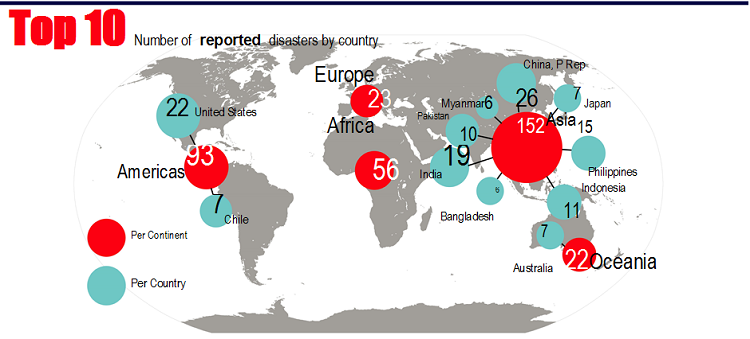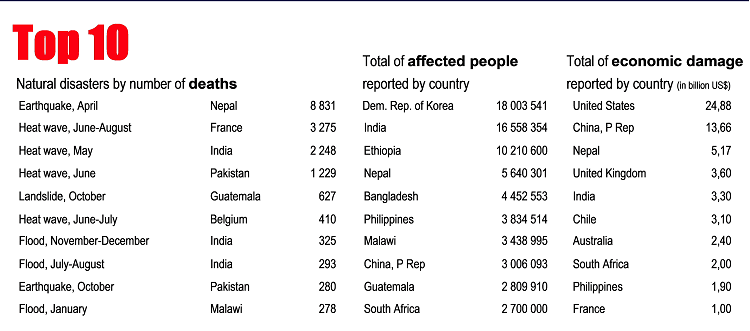Abstract:
The recent Mumbai floods, now Kerala, Karnataka and children dying in Muzaffarpur raises questions that is it lack of resources or preparedness or institutional vulnerability that has led to loss of lives in all these places. Mumbai having the richest Municipal corporation while in Bihar the state run hospital being in pathetic condition where children suffering from Acute Encephalitis Syndrome came from poor families. This article tries to examine these few questions.
The road to creating resilience is an immensely challenging concept that involves multiple stakeholders who are involved to bring technical changes, structural and non-structural changes and along-with it a huge dose of socio-psychological change amongst every participant so that resilience maybe achieved at all level. The United Nations International Strategy for Disaster Reduction’s Sendai Framework are well thought principles that serve as a guidance for governments, organisations and practitioners to reach certain goals which may help in creating resilience, reduce underlying risks and in the process aligned to the broader sustainable development goals which indirectly address climate change thereby bringing sustainability in society.
The world is affected by increasing number of natural calamities and the worst affected are countries lying in geographical vulnerable places which are populous, low per capita income which in turn accentuates losses in terms of life and property. Over the years across stakeholders there has been a realisation and acceptance on the reality of climate change, environment and the impact of oft occurring natural hazards which has the potential of becoming a disaster at varying levels which depends on many factors that can range from lack of awareness, poor infrastructure, and the overlooked factor often is ‘institutional vulnerability’. World governments have been signatories to United Nations resolve through the Sustainable Development Goals and the Sendai Framework to handle different aspects towards ensuring Disaster Risk Reduction. However, as sociologists try to figure out what makes people vulnerable and put them at risk? Bankoff, Frerks, & Hilhorst (Eds.), in ‘Mapping Vulnerability: Disasters, Development and People’ raise the question what makes people vulnerable? With climate change and ever occurring natural disasters all over the world the meaning of ‘vulnerability’ keeps changing.

Source: EM-DAT (25th January 2016): The OFDA/CRED - International Disaster Database www.emdat.be Université catholique de Louvain Brussels - Belgium
The above map shows that India is one of the countries in South East Asia which has been a global hotspot owing to its geographical location. The country is vulnerable to multiple hazards and which is worsened with huge population, poverty and lack of awareness on disaster preparedness. In India, though the national policy on Disaster Management has been enacted in 2005, taking advantage of the well laid out principles is yet to take institutional roots. Following are the types of natural disaster with number of people affected and the economic damage caused.

Source: EM-DAT (25th January 2016) : The OFDA/CRED - International Disaster Database www.emdat.be Université catholique de Louvain Brussels - Belgium
From the above data, it shows India has the second highest number of affected people in different types of disaster. As raised by Bankoff, Frerks, & Hilhorst (Eds.) what makes people vulnerable? Let us examine the current Mumbai rains that caused flooding and the Children who died in Bihar due to encephalitis.
On July 2nd, Mumbai received 16 inches rains that led to the precious loss of life for 44 people with major low-lying areas submerged in water disrupting life and property. Similarly, a decade earlier July 26,2005 was the year that remains etched in the memory of every Mumbaikar when the city received 944 mm rains for 24 hour that killed over 1100 people and left many low-lying areas for example Dharavi, Bandra-Kurla complex submerged in water and the same situation a decade later as well.
Few questions arise: Were there enough institutional mechanisms put in place post-2005? Where is the gap? Let us tackle these two questions. As far as Institutional Mechanism is concerned since 2005 the Disaster Management Act was passed and India having complied by the Hyogo Framework of Action had set up the National Disaster Management Authority that percolated down to setting up of the State Disaster Management Authority and District Disaster Management Authority. The National Disaster Response Force was successfully set-up along-with the State Disaster Response Force to handle any emergency, but still why is the vulnerability still high?
If one takes the current situation all over the country be it in Karnataka, Bihar, Maharashtra, North East, Gujarat, over the years the number of people killed may have considerably come down; however, the often overlooked factor as mentioned by Jonaton Lassa is ‘institutional vulnerability’ in disaster risk reduction that includes formal institutions (codes, regulations, constitutions, bureaucracy), informal institutions (culture, norms, traditions) and governance that are yet to be strengthened to provide protection and security against disaster risk reduction. The Global Assessment Report found that countries with weaker institutional arrangement and governance are the places where global disaster risk is highly concentrated. The governance pattern in most countries do not integrate with development and in general the institutional and legislative arrangements for Disaster Risk Reduction are weakly connected to development sectors.

For example, the Brihan Mumbai Municipal Corporation (BMC) is the richest organisations with an annual budget of INR 30,692 crore. Besides Mumbai is home to the richest business houses, film actors, sports people of international repute, and therefore in terms of resources, and formal and informal institutions there is no dearth. Despite all the basic premises in place, the current rains not only snuffed out more than 30 lives but curiously two people died inside their SUV as they could not gauge the depth of waterlogging in an underpass in Malad, which could have been avoided had there been some kind of warning written above the bridge!
On the other hand, more than a hundred young children died of encephalitis in Bihar which was thought to be owing to eating lichis which triggers hypoglycaemia - meaning blood sugar levels in children become excessively low. However it is not known why dochildren suffer from Acute Encephalitis Syndrome during the lichi harvest season in Muzaffarfur! A Standard Operating Procedure found by UNICEF was being implemented in the past few years and that did see a fall in the number of casualties. However, this year it was somewhat neglected and that may have caused a rise in the number of deaths.
In both the above cases, and the natural calamities across the country happening right now was known to come for sure. Be it flooding in Mumbai or elsewhere and the Acute Encephalitis Syndrome, these occur regularly, however what hasn’t been done is Institutional strengthening which would have increased resilience and ensured that the deaths did not happen That indeed was the case during Cyclone Phoni in Orissa where the institutions have been strengthened to ensure loss of lives do not happen, or as in the case of Gujarat which strengthened its institutions following the Bhuj earthquake in 2001 January 26.
The Disaster Management Cycle from preparedness to recovery and rehabilitation is doable and can be achieved with a strong partnership between the government and civil society as in today’s world. In a fast growing economy like India, it is pathetic to see loss of life which can be easily prevented with a determined political will that would ensure institutional resilience.
References:
- Lassa J.2010. Institutional Vulnerability and Governance of disaster risk reduction: macro, meso and micro scale assessment. PhD Dissertation.Friedrich-Wilhelms-Univ.Bonn.216pp.
- Cuny FC,1983, Disaster and Development. Newyork: Oxford University Press.
- Quarentelli EL, Lagadec P,Boin A,2006, “A heuristic Approach to future disasters and crises: new, old and in-between types.
- Singh Amita,2016, “A journey through Smart Cities between Datapolis and Participolis, UNESCO Netexplo Publications, Paris.
(The paper is the author’s individual scholastic articulation. The author certifies that the article/paper is original in content, unpublished and it has not been submitted for publication/web upload elsewhere, and that the facts and figures quoted are duly referenced, as needed, and are believed to be correct). (The paper does not necessarily represent the organisational stance... More >>
Image Source: https://akm-img-a-in.tosshub.com/indiatoday/images/story/201907/Rain_in_Mumbai-020719-08-photo-770x433.jpeg?Wwe8OuT8A5WM1Q1Ad16ICTDBZ8mlYhAj











Post new comment